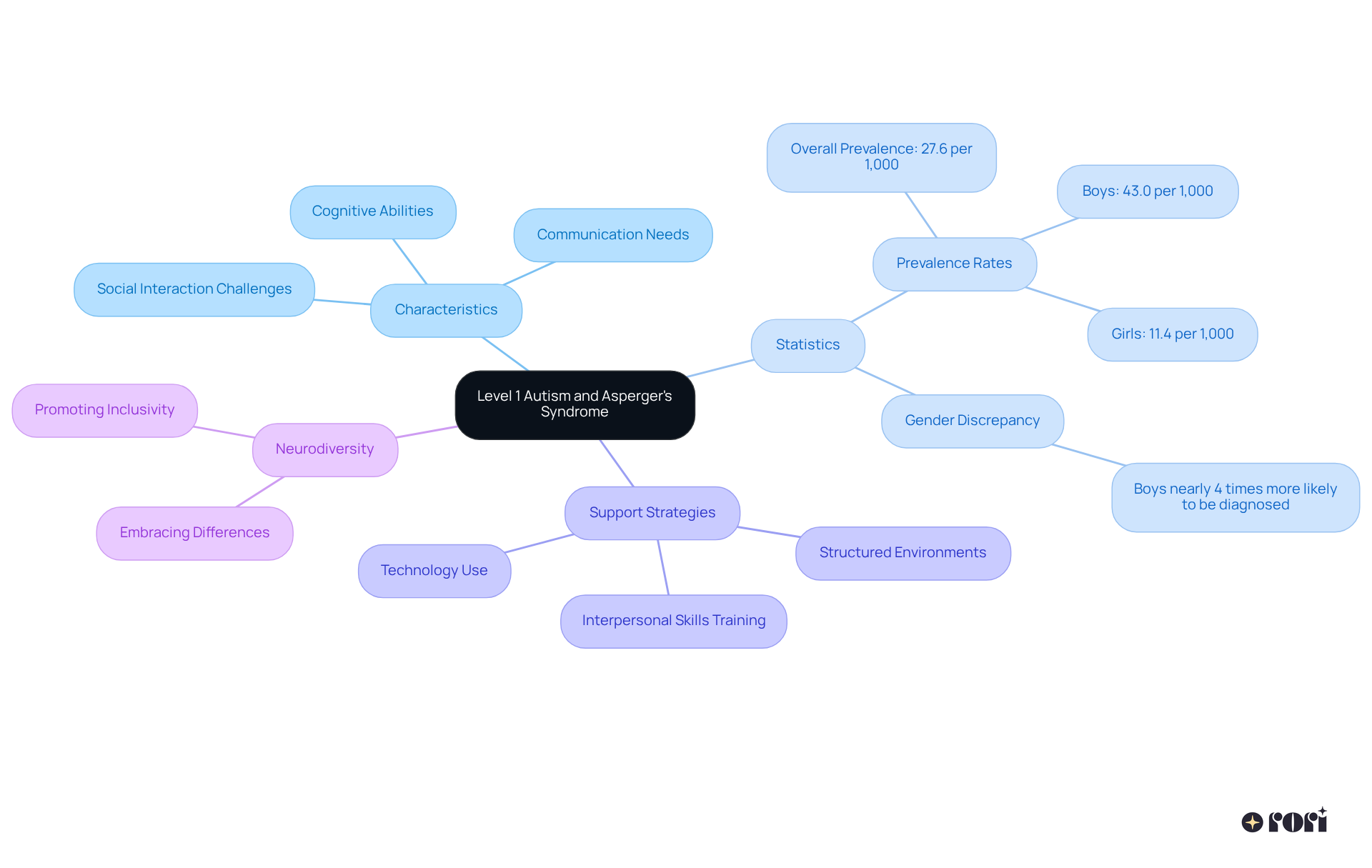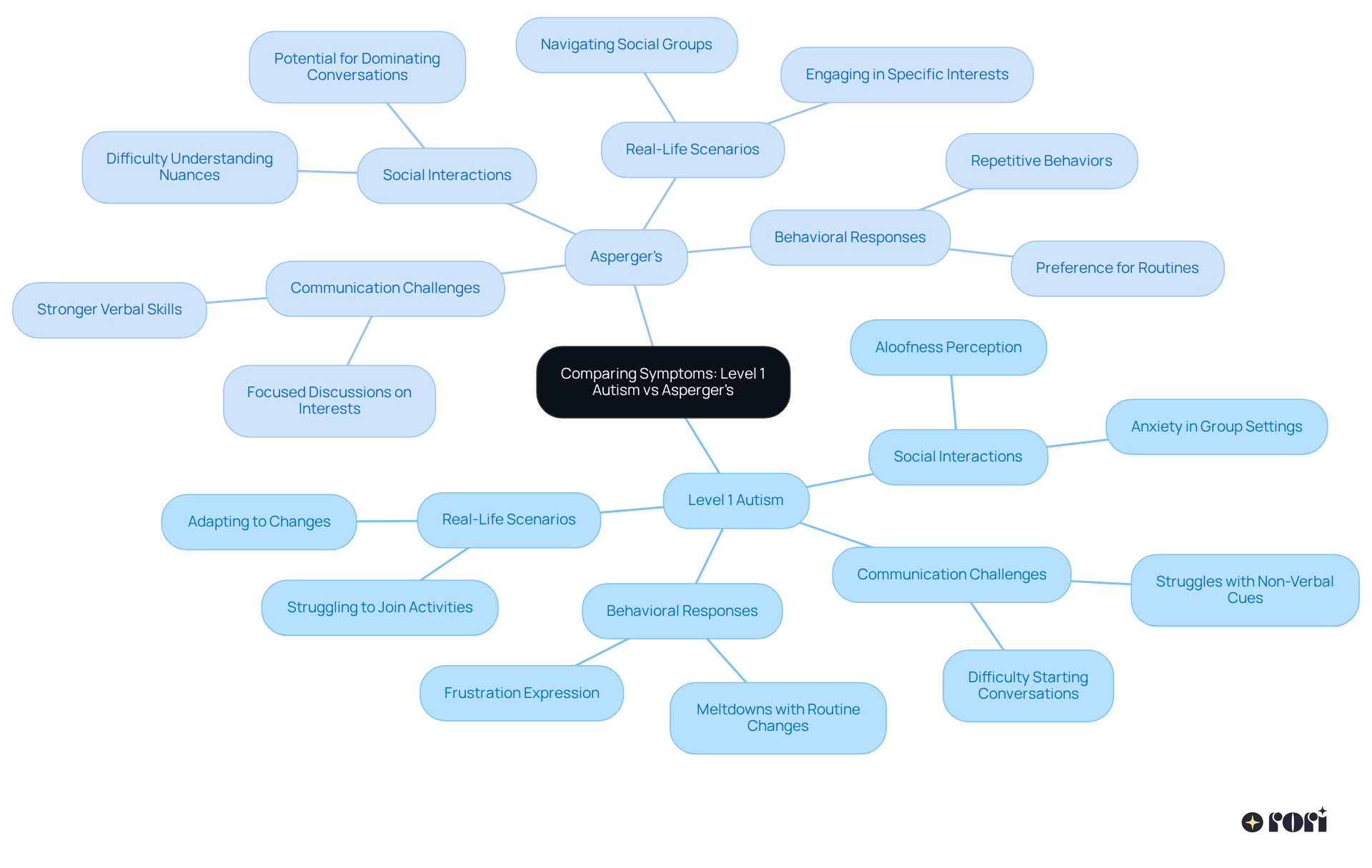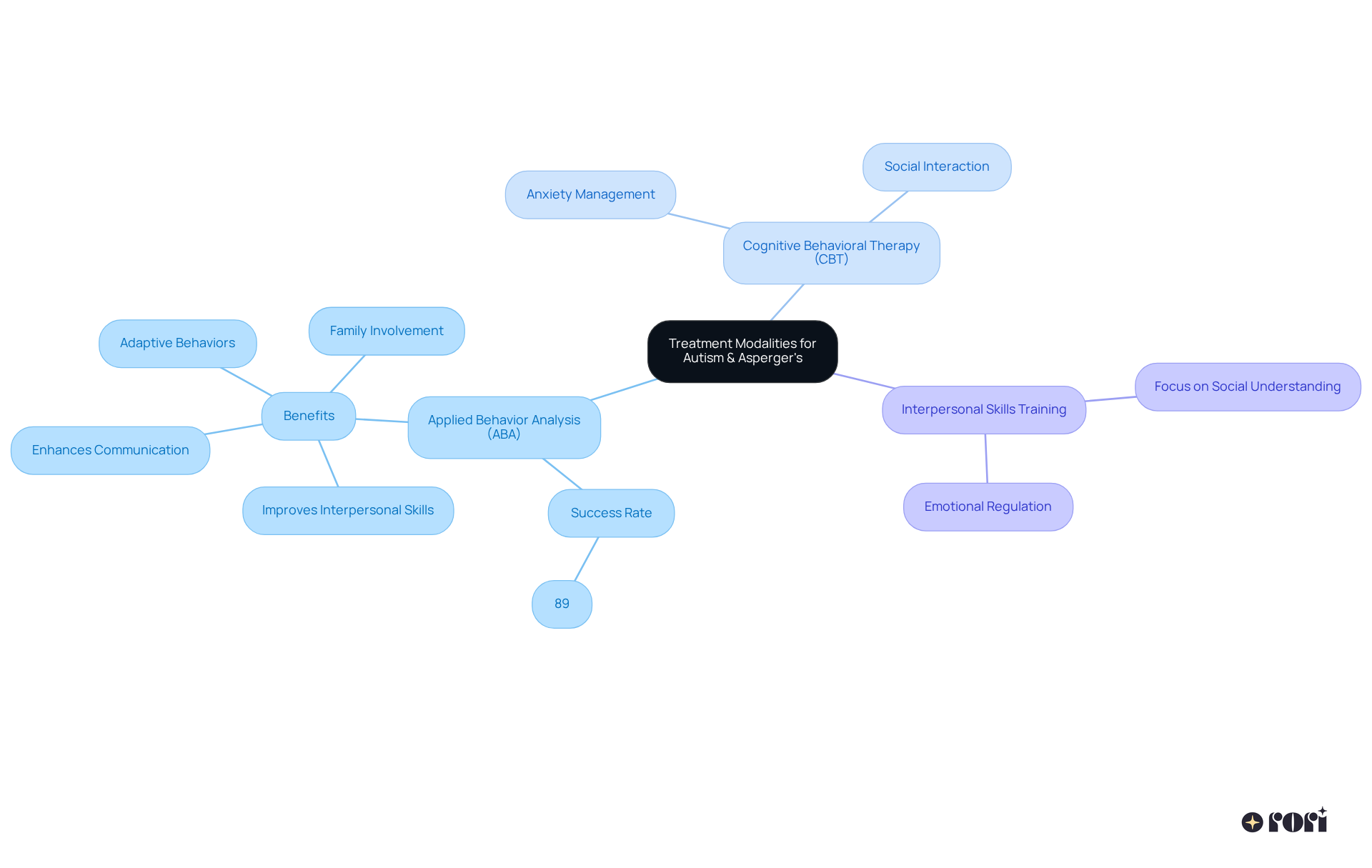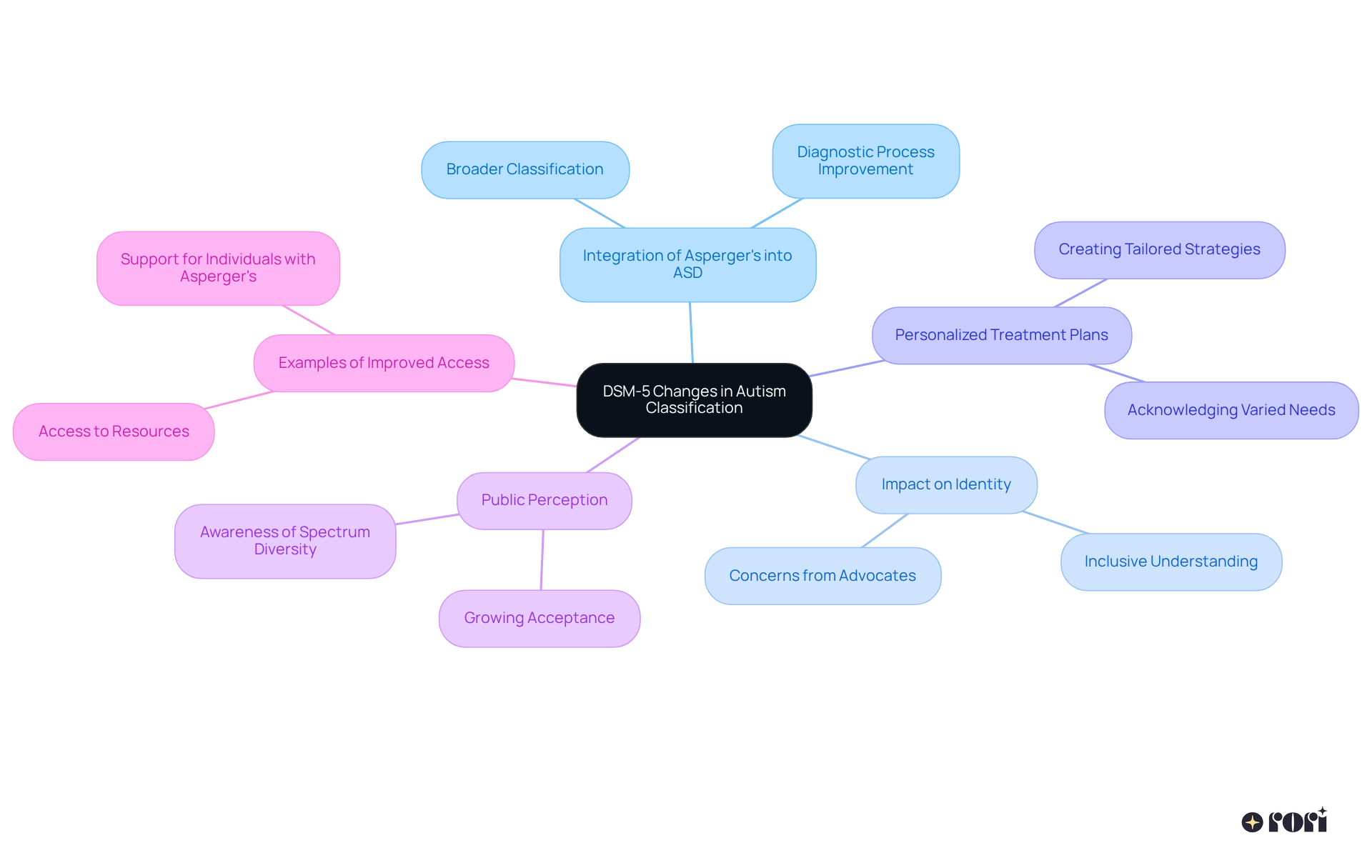In this article, we explore the key differences between Level 1 Autism and Asperger's Syndrome. Both conditions are part of the Autism Spectrum Disorder (ASD), but they require different levels of support and present unique challenges. For instance, individuals with Asperger's often have stronger verbal communication skills and cognitive abilities. On the other hand, those with Level 1 Autism may need more assistance in social interactions and adjusting to changes in their routines.
Understanding these differences is crucial! It highlights the importance of tailored interventions that cater to each individual's needs. By recognizing the unique characteristics of each condition, we can foster a supportive environment for everyone involved. Let’s explore this together and consider how we can make a positive impact!
Understanding the difference between Level 1 Autism and Asperger's Syndrome goes beyond just terminology; it reflects a wide range of experiences that shape lives. As we become more aware of autism spectrum disorders, it's crucial to grasp the subtle differences between these two classifications.
This article will explore the key characteristics, treatment options, and the impact of recent diagnostic changes. By doing so, we aim to empower families and professionals alike.
How can recognizing these differences help us enhance support strategies and create a more inclusive environment for those on the spectrum? Let’s explore this together!
The discussion of level 1 autism vs Asperger's highlights that this condition, often referred to as high-functioning autism, involves a need for support in communication and behavioral challenges. Individuals may find social interactions tricky, struggle with interpreting social cues, and have difficulty adapting to changes in their routines.
Interestingly, Asperger's condition, which used to be viewed as a separate diagnosis, shares many traits when considering level 1 autism vs Asperger's. However, it is generally associated with stronger verbal communication skills and enhanced cognitive abilities. Both conditions fall under the Spectrum Disorder (ASD) umbrella, but the key difference when comparing level 1 autism vs Asperger's lies in the level of support required and the specific challenges encountered.
Did you know that boys are nearly four times more likely to be diagnosed with autism than girls? This statistic is reflected in the prevalence rates for level 1 autism vs Asperger's. Currently, the overall prevalence of ASD stands at 27.6 per 1,000 8-year-old children, with recent studies indicating that about 1 in 36 children are diagnosed with ASD. This highlights the critical need for early intervention and personalized support strategies.
Experts emphasize understanding the unique characteristics associated with Asperger's Syndrome, such as a strong focus on specific interests and challenges in interpersonal reciprocity. Many individuals on the spectrum share personal stories that reveal how receiving a diagnosis can lead to greater self-awareness, promoting self-advocacy and acceptance.
When it comes to real-world support for individuals, understanding the differences between level 1 autism vs Asperger's is crucial, with strategies like:
These approaches aim to empower individuals, helping them navigate social situations and build independence. As we continue to discuss autism, embracing neurodiversity and recognizing the strengths of those with these diagnoses is essential for creating inclusive communities. Let’s explore this together!

Individuals often compare level 1 autism vs asperger's, as both can lead to significant challenges in communicating with others. This can sometimes come across as aloofness or a lack of interest in social interactions. They might find it tough to start conversations or pick up on non-verbal cues, which can lead to misunderstandings in social situations. On the other hand, individuals with autism spectrum disorder usually show stronger verbal skills and can engage in conversations, although their discussions might focus heavily on specific interests.
Did you know that about 1 in 31 youths in the U.S. has autism? This statistic really highlights how common these conditions are. Both groups may show repetitive behaviors and a strong preference for routines, but the intensity and nature of these behaviors can vary quite a bit. For example, a child with Level 1 Autism might have a meltdown if their routine changes, while another child with a similar condition may express frustration verbally but adapt more easily to changes.
Experts suggest that even though individuals with Autism Spectrum Disorder might have better interpersonal communication skills, they still face unique challenges, especially when it comes to understanding interpersonal nuances. This distinction sheds light on the subtle differences in how individuals with level 1 autism vs asperger's interact and respond behaviorally.
Consider real-life scenarios, like a young person with Level 1 developmental disorder struggling to join a group activity due to anxiety, compared to another young person with a specific type of autism who might dominate the conversation with their interests. These examples really illustrate the differences in experiences and challenges faced by these individuals. Let’s explore this together and see how we can support each other in navigating these complexities!

When it comes to treatment for level 1 autism vs Asperger's, many parents find that Applied Behavior Analysis (ABA) therapy can be a game changer! With an impressive success rate of over 89%, it helps children with autism spectrum conditions improve their interpersonal skills, communication, and adaptive behaviors. For those with Asperger’s Disorder, it often involves interpersonal skills training and cognitive behavioral therapy (CBT), especially to address anxiety and social interaction challenges.
While both groups benefit from tailored approaches, the focus can differ. When considering level 1 autism vs Asperger's, treatment for level 1 autism usually emphasizes behavioral modification, while Asperger's treatment tends to prioritize enhancing social understanding and emotional regulation. Family participation is so important in both scenarios, allowing parents to actively support their child's development.
Did you know that research shows 47% of children receiving ABA therapy become indistinguishable from their peers? This highlights the importance of customized interventions that cater to each child's unique needs and strengths. Let’s explore this together and see how we can support your journey!

The publication of the Diagnostic and Statistical Manual of Mental Disorders, Fifth Edition (DSM-5) in 2013 brought about a big change in how we classify autism-related disorders. The classification of Asperger's Syndrome falls under the broader Autism Spectrum Disorder (ASD), highlighting the distinction between level 1 autism vs Asperger's. This reclassification aims to make the diagnostic process smoother and better reflect the range of autism symptoms.
While some advocates worry that this integration might blur the unique identity of individuals on the spectrum, many mental health professionals believe it fosters a more inclusive understanding of autism. For instance, a well-known mental health expert shared, "The inclusion of Asperger's syndrome into ASD enables a more thorough approach to treatment, acknowledging the varied needs of individuals on the spectrum." This shift highlights the importance of creating personalized treatment plans that cater to the unique challenges individuals face, regardless of whether they have level 1 autism vs Asperger's or another diagnosis.
Real-world examples show how this integration has improved access to resources and support for those previously identified with Asperger's, helping to create a more unified approach to autism care. Plus, data on public perception reveals a growing acceptance of this integration, as awareness of the spectrum's diversity continues to grow. Did you know that according to the CDC, the prevalence of autism has risen to 2.7% among children in the U.S.? This emphasizes the need for effective and inclusive treatment strategies.
At Rori Behavioral Innovations Inc., we align with these changes by focusing on personalized care that empowers families and clinicians to navigate the complexities of autism diagnosis and treatment. Let’s explore this together!

Understanding the distinctions between Level 1 autism and Asperger's Syndrome is so important for fostering awareness and support for individuals on the autism spectrum. While both conditions share common traits and challenges, they truly require different approaches in terms of support and treatment. Recognizing these differences not only helps in more accurate diagnosis but also enhances the development of tailored interventions that can significantly improve the quality of life for those affected.
Key insights reveal that:
It's crucial to emphasize the importance of:
These insights highlight the need for a nuanced understanding of autism spectrum disorders, especially with the DSM-5's reclassification aiming to create a more inclusive framework for diagnosis and treatment.
Ultimately, embracing neurodiversity and advocating for tailored support strategies is essential for building inclusive communities. As society continues to evolve in its understanding of autism, fostering acceptance and awareness will pave the way for better resources and opportunities for individuals with Level 1 autism and Asperger's. Let’s engage in conversations, share experiences, and seek knowledge about these conditions together! This can lead to a more compassionate and informed approach to autism spectrum disorders.
What is level 1 autism and how does it relate to Asperger's Syndrome?
Level 1 autism, often referred to as high-functioning autism, involves a need for support in communication and behavioral challenges. Asperger's Syndrome shares many traits with level 1 autism but is generally associated with stronger verbal communication skills and enhanced cognitive abilities.
What are some common challenges faced by individuals with level 1 autism and Asperger's Syndrome?
Individuals may find social interactions tricky, struggle with interpreting social cues, and have difficulty adapting to changes in their routines.
How prevalent is autism, and are there differences in diagnosis rates between genders?
The overall prevalence of Autism Spectrum Disorder (ASD) is currently 27.6 per 1,000 8-year-old children, with about 1 in 36 children diagnosed with ASD. Boys are nearly four times more likely to be diagnosed with autism than girls.
What are some unique characteristics associated with Asperger's Syndrome?
Individuals with Asperger's Syndrome often have a strong focus on specific interests and may experience challenges in interpersonal reciprocity.
Why is receiving a diagnosis important for individuals on the spectrum?
Receiving a diagnosis can lead to greater self-awareness, promoting self-advocacy and acceptance among individuals on the spectrum.
What strategies can support individuals with level 1 autism and Asperger's Syndrome?
Effective strategies include structured environments, interpersonal skills training, and the use of technology to help individuals navigate social situations and build independence.
How does the discussion of autism emphasize the importance of neurodiversity?
Embracing neurodiversity and recognizing the strengths of individuals with autism is essential for creating inclusive communities.